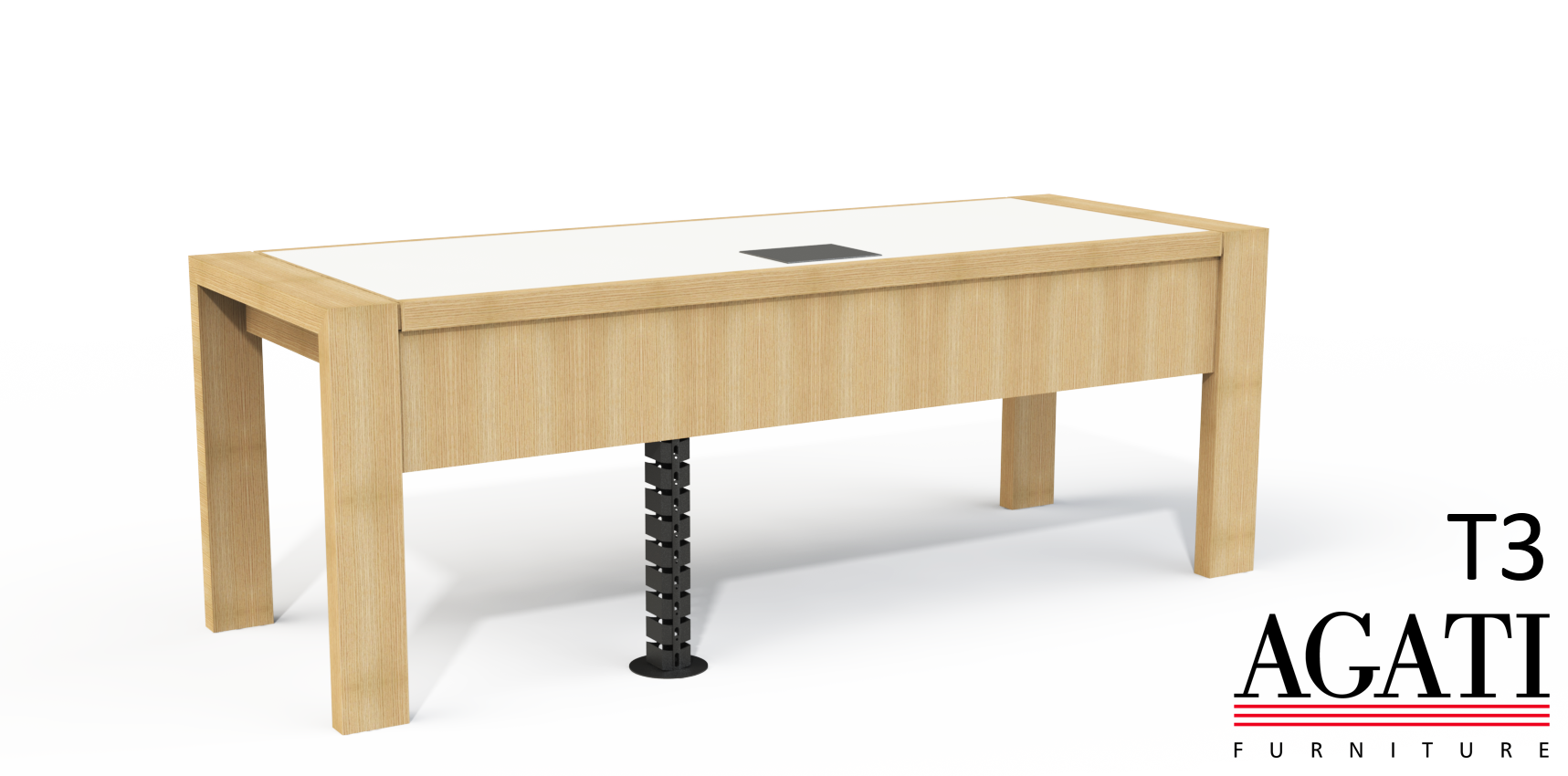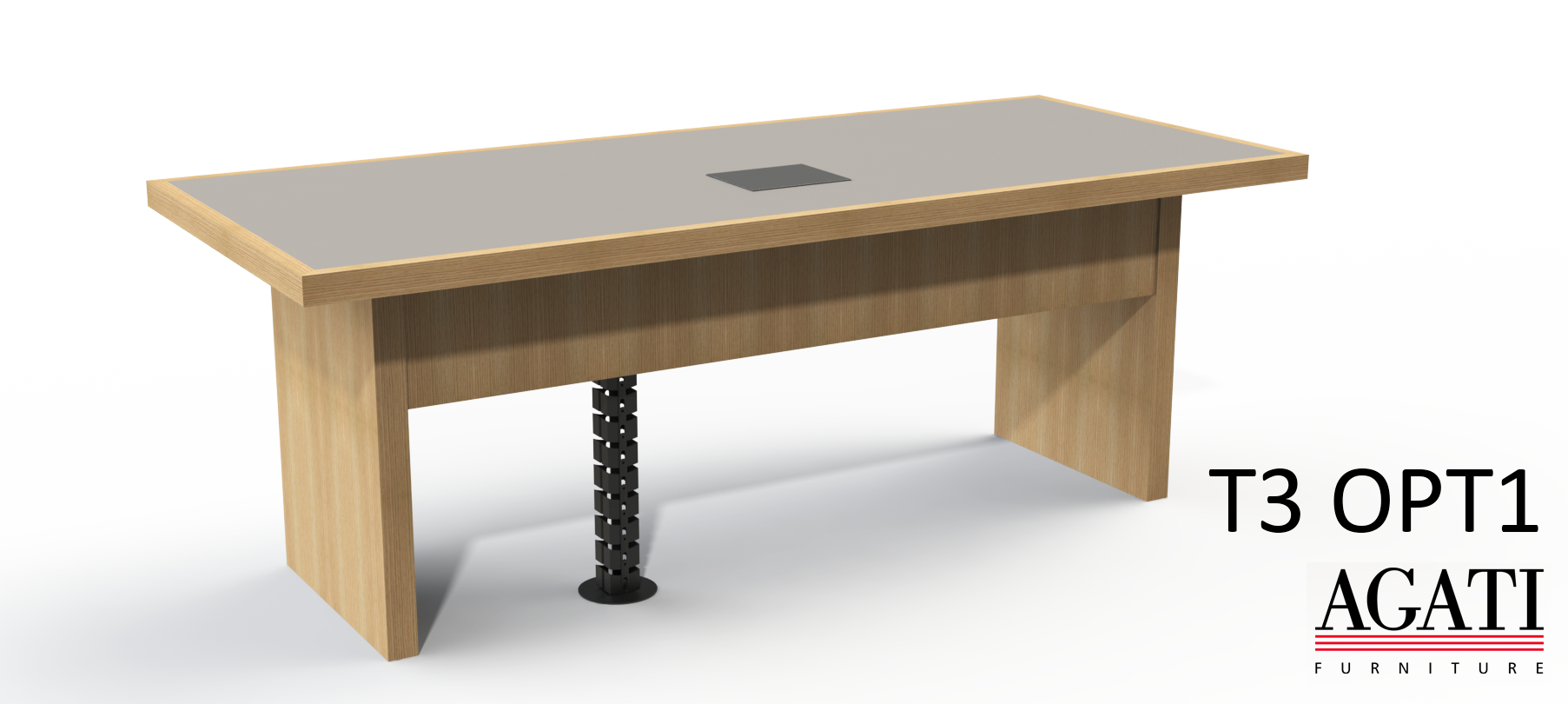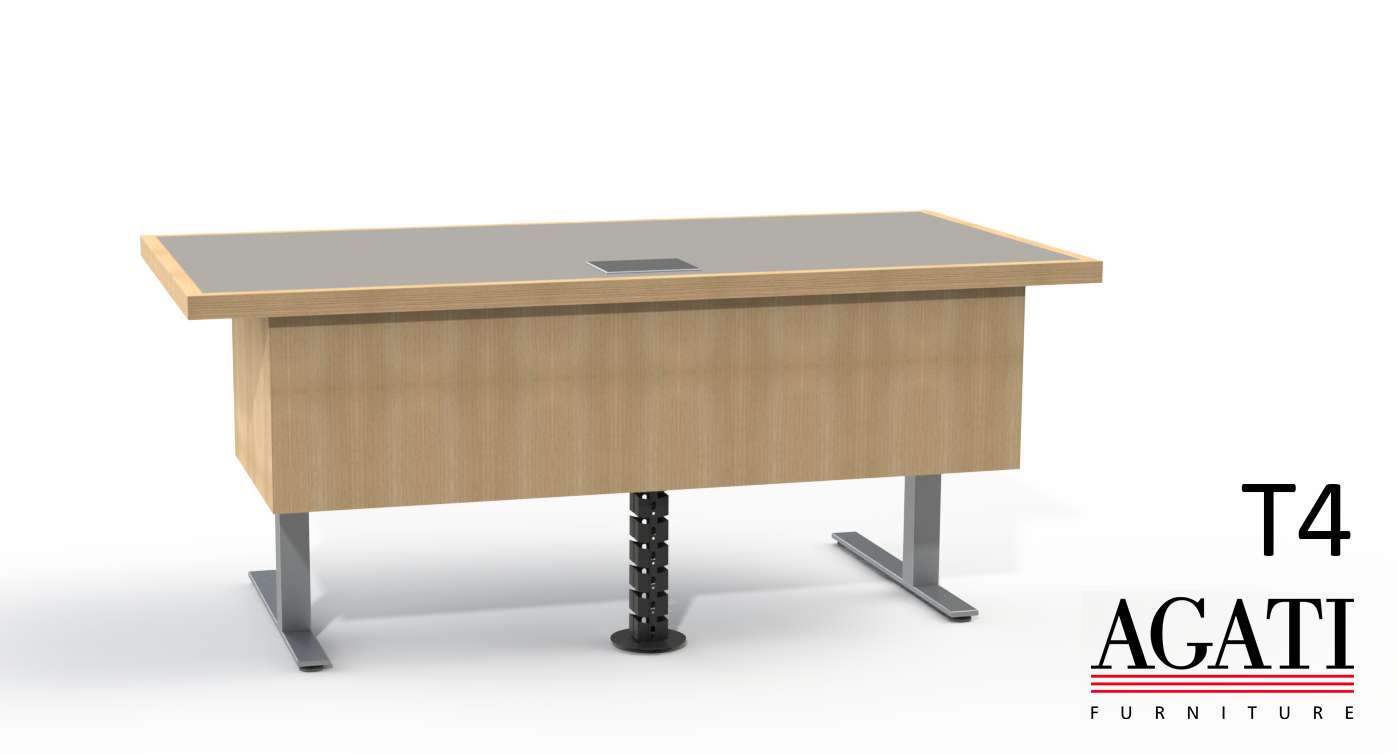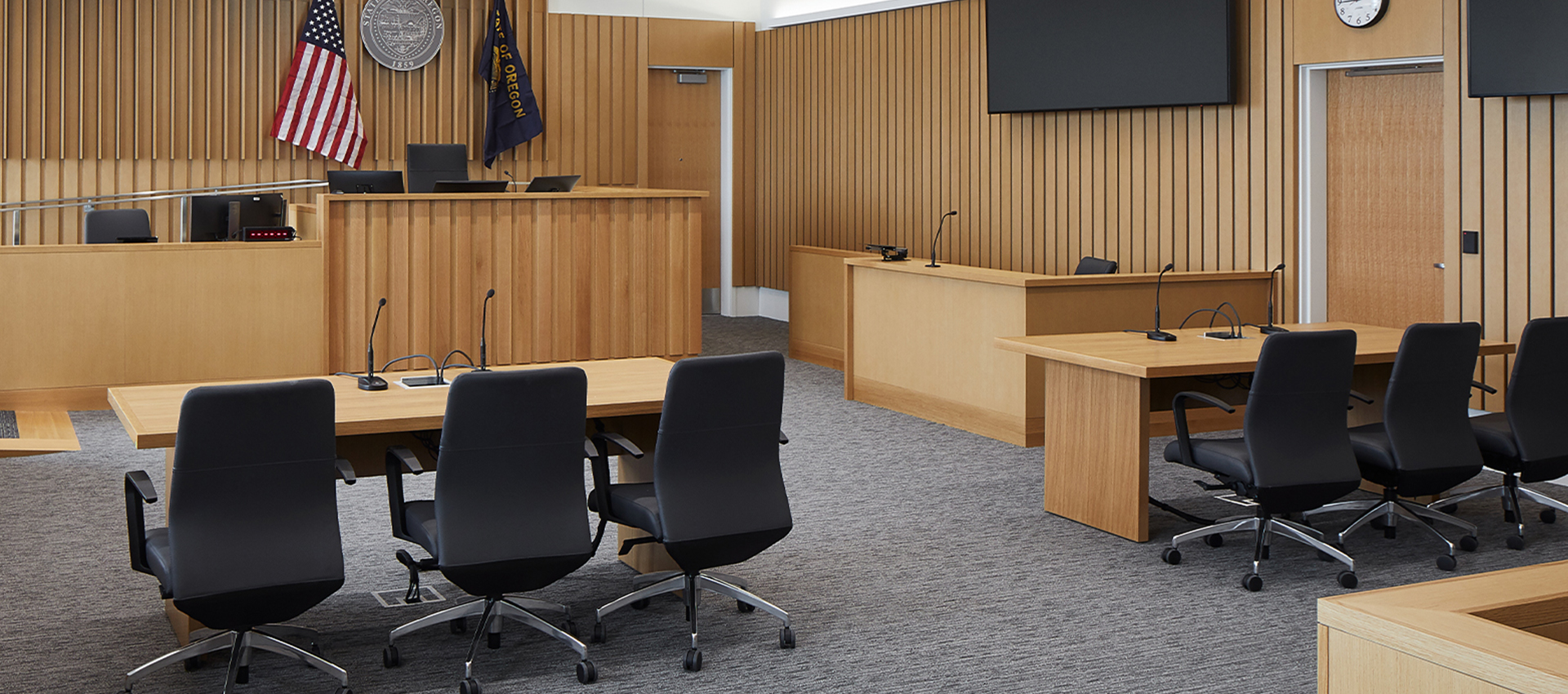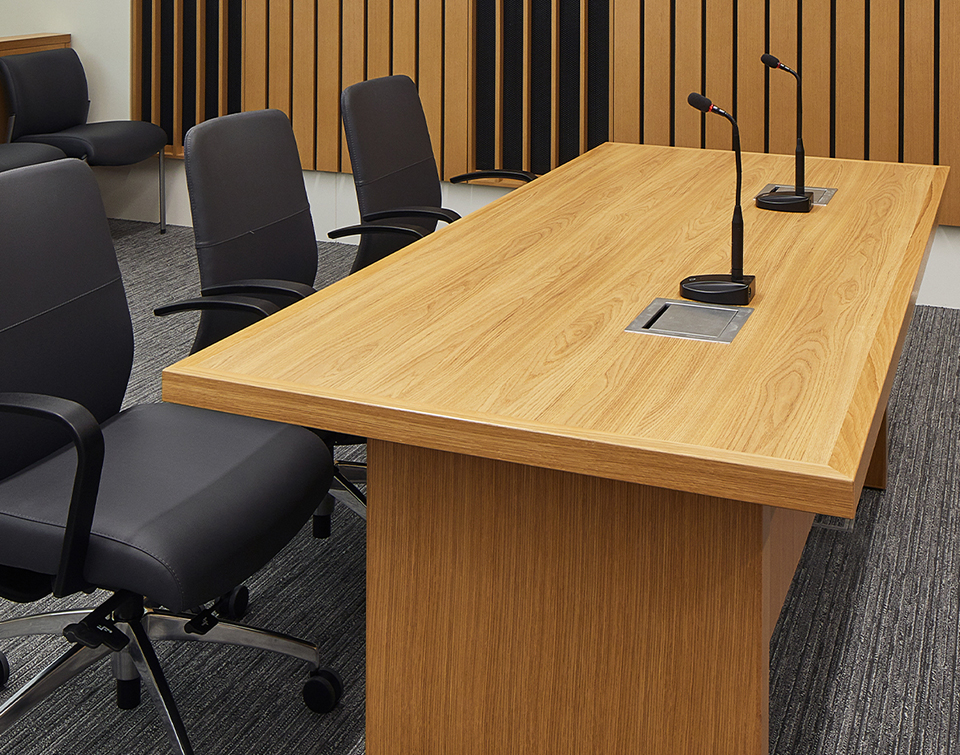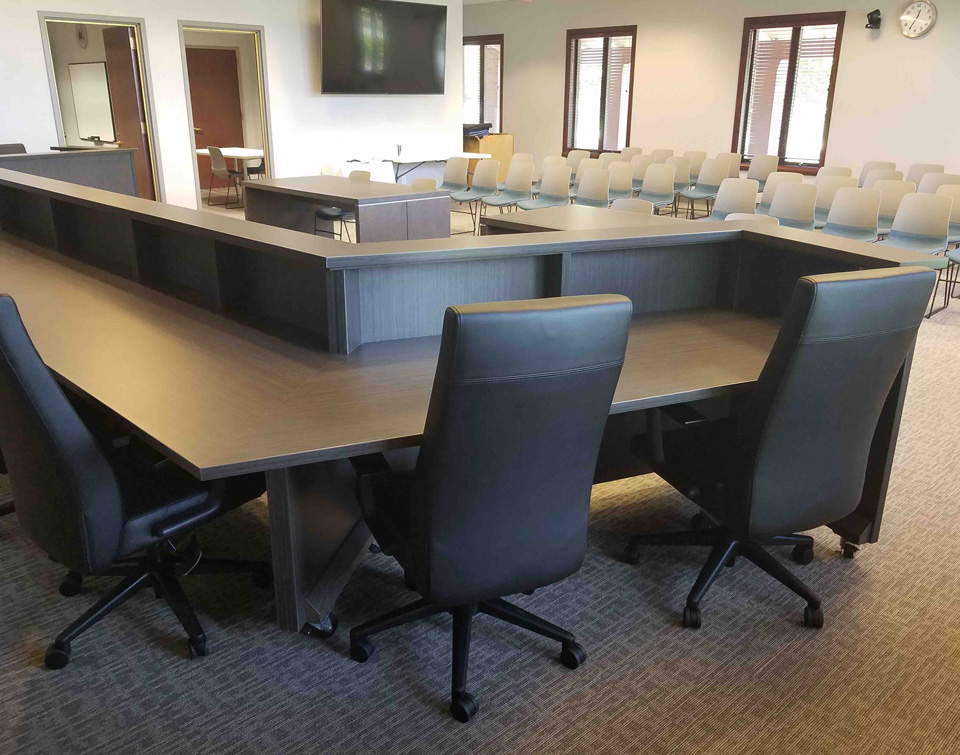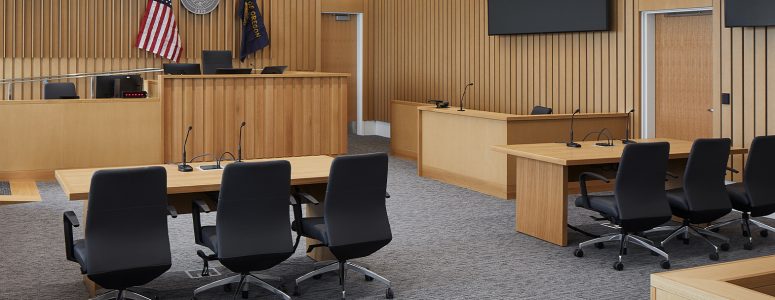
We recently had the pleasure of working with Multnomah County Central Courthouse in Oregon to redesign a new Central Courthouse to better support their community’s needs while providing a restorative environment for people in the space. You can find the full details of the project in our original project feature.
Years ago, courtroom design was primarily utilitarian, with aesthetics, comfort, and amenities being primarily ignored. Fortunately, times have changed and creating a more pleasing and functional space has become a priority in many courthouse design projects.
Every project we work on provides a unique opportunity for collaboration, something our team appreciates greatly throughout a project. Great collaboration often leads to more effective design decisions for a space.
In the case of the Multnomah project, our collaboration started with SRG, the architecture firm. They needed to come up with a custom table design for the courtroom. The biggest challenge was balancing table size, the number of people who could comfortably sit around the table at one time, accommodating people with various physical needs, and the desired design aesthetic.
Multnomah County often prioritizes collaborative and unique approaches to court dates, particularly in Family Court. It’s not uncommon for them to have all parties gather around a single table, which made for an interesting custom courtroom furniture project.
The Project
As we went through our design process with them, listening to the needs and wants of the Multnomah County Central Courthouse, we got to work on developing different options. Ultimately, there were three options we presented, which we ended up prototyping and reviewing together at the courthouse.
Here are a few of the prototypes we considered:
Option 1
Our first prototype provided the ability to seat five people around it comfortably. Featuring clean cable management and an open design concept, it was a great start but ended up not having enough of a strong visual presence for the courthouse as a visual focus point of the courtroom.
Option 2
Version two still allowed five people to sit around it. However, some comfort was sacrificed for people sitting around the table as a result of the closed sides and positioning of the legs. This prototype did have the strong visual presentation the customer was looking for in the space.
Option 3
Version three provided an interesting twist! While not emphasizing visual aesthetic and presence as much as the second version, this prototype provided the most functional and utilitarian approach. The piece featured a lift system to accommodate people of different sizes effectively and allowed people to sit around it comfortably.
The Review Process
As we reviewed the designs with Multnomah County Central Courthouse and SRG, it seemed like the first version was going to be the winner as it could seat people the most comfortably.
However, when one of the judges came in and reviewed the designs, she provided valuable insight into the final direction we went with.
Here are some of the interesting insights she reminded us of:
- In a courtroom setting, symmetry matters. While our lift table system was ideal for seating people comfortably and providing extra accommodation for some people with physical disabilities, what we didn’t consider was the impact different height tables could have on the perception of a jury. In a courtroom setting, it’s important that both parties represented have the same visual presentation so the jury’s opinion isn’t swayed by visual differences or table height.
- Privacy guards are of the utmost importance. In other settings, privacy guards underneath the tables are driven primarily by aesthetics. Whereas in a courtroom setting, they are vital to keep any handcuffs out of sight. Again, this is to emphasize neutrality in how the jury is viewing both the defendant and plaintiff.
- The tables needed to support the court’s unique approach to various court cases. Most commonly, tables in a courtroom are designed for users to sit on one side. Uniquely, this judge shared that many times in Family Court, coming around a table together produced the best results. This insight alone was a fascinating part of the project and the court’s approach to settling challenging disputes, but it also reinforced the importance of that inspiration in our designs.
When we started this project, we had a vision of what would work for the space based on the input we started with. However, as we gained even more clarity and sought insight from other voices, we were able to pivot to take into account the judge’s insights and the needs of Multnomah County Central Courthouse.
In the end, we actually ended up going with the second option to provide a strong visual presence, improved privacy underneath, and to leave off the lifting feature.
In every project, it’s important to make sure the end product will meet the needs of the client, user, and the environment it is placed in. When we welcome feedback and the voices of key users, we are more likely to make successful design decisions and we can pivot our designs according to the feedback we receive.
Looking for Custom Courtroom Furniture?
It’s no secret that space issues are a consistent struggle for many courtrooms, often because they’re converted from other types of spaces and aren’t originally designed specifically for that purpose. Because of this, when we look back, almost all of the courtroom furniture we’ve installed features either significant modification off of a standard design or completely custom designs for that project.
We are problem-solvers at heart, creating solutions that make a real difference for public spaces. The challenge of developing an effective solution for any space is an exciting venture for our team.
Our courtroom design experts can work with you to develop furniture solutions for your specific needs. Judges’ Benches can be built on a raised platform and provide power/data management. Jury Boxes can include a solid modesty face and side panels that extend to the floor. Panels can also be raised on stainless steel legs, or even mounted on casters for the flexibility that mock courtrooms sometimes require. Witness Stands can be built in any of our collection styles. Each piece of furniture can be customized!
Discover more about our custom courtroom furniture options and courtroom furniture solutions >>
